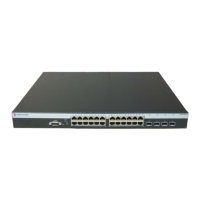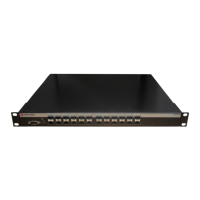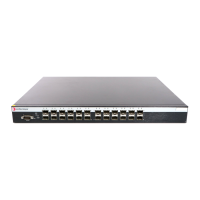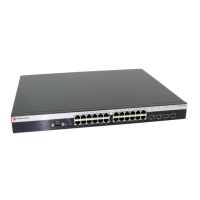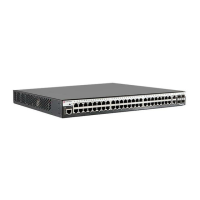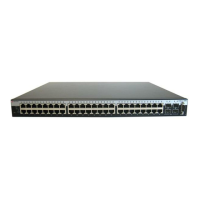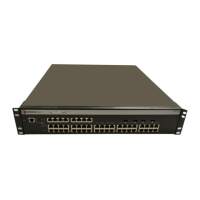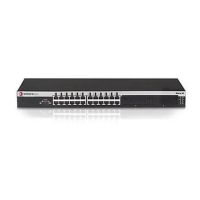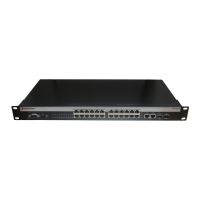Spanning Tree Basics
Fixed Switch Configuration Guide 15-13
designated port (Figure 15-6, call out 6), takes the role of backup port. In the shared LAN example
it may take over as designated port if the original designated port is disabled.
All operational ports which are not root, alternate or backup are designated ports. These ports
provide a path to the root for attached devices.
Table 15-2 provides a summary of STP port roles.
Assigning Port States
All ports are blocking when the operational status switches from disabled to enabled. By default,
automatic edge detection is enabled and ports are configured as non-edge ports. In this scenario a
user port will become forwarding in several seconds. A port configured as an edge port will
forward immediately.
Ports which are selected as alternate or backup ports are immediately put into the discarding state
and remain discarding until a new port role is selected. The root port may go to the forwarding
state as long as any recent former root ports are synchronized with the new root information.
Designated ports may forward as soon as the attached port signals agreement as specified by
RSTP. In the absence of the above conditions, root and designated ports get to the forwarding state
through the use of timers. The value of the timers is dependent on the value of ForceVersion. The
default value is MSTP. If the value is StpCompatible, the timer values are derived from forward
delay. Otherwise the values are derived from hello time.
Table 15-3 provides a summary of STP port states.
Table 15-2 Spanning Tree Port Roles
Port Role Description
Root The one port that is used to connect to the root bridge. It is elected based on its least
“path-cost” to the root bridge and is forwarding traffic.
Alternate Any redundant upstream port that provides an alternate path to the root bridge (other
than the root port). Alternate ports are set to blocking.
Designated Any downstream port that provides a path back to the root bridge for a downstream
bridge. This port is forwarding traffic.
Backup A port that acts as a redundant designated port on a shared LAN. Backup ports are
set to blocking.
Table 15-3 Spanning Tree Port States
Port State Behavior
Blocking Actively preventing traffic from using this path. Still receiving BPDUs, so continuing to
monitor for management and STA information.
Listening Continuing to block traffic while waiting for protocol information to determine whether
to go back to the blocking state or continue to the learning state. Listens to BPDUs to
ensure no loops occur on the network.
Learning Learning station location information but continuing to block traffic.
Forwarding Forwarding traffic and continuing to learn station location information.
Disabled Disabled administratively or by failure.
Discarding Used as shorthand for blocking, listening, or learning state.
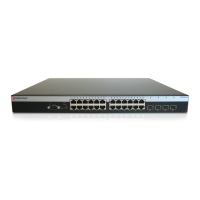
